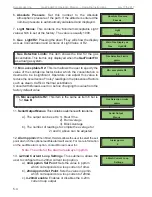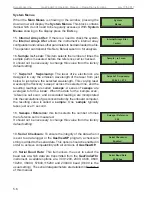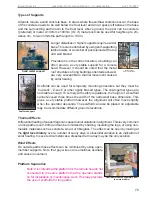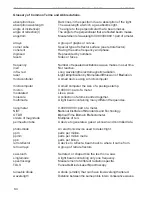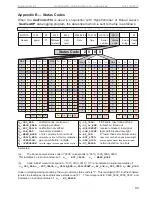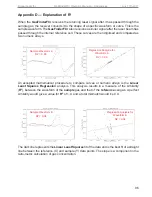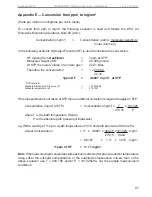
7.6
Boreal Laser Inc.
GasFinderFCr Operation Manual — Troubleshooting
July 17th 2017
Alignment Procedures for a Moving Building
All buildings move. Some move more than others depending on the external and internal
forces. In most cases, this movement goes unnoticed until cracks form in concrete or a small
piece of plaster fl akes off. Movement can occur over years as the building foundations settle,
or over seconds as wind forces or cranes move the structure. Settlement over a long time is
too slow to cause an alignment problem, because any movement is incrementally small, and
can be compensated for with periodic adjustments. When the movement is caused by wind,
the structure returns to its previous position once the wind has passed. In the same way, the
shaking motion produced by the movement of overhead cranes is not usually a problem as
the structure quickly returns to its original position when the crane has stopped.
Movement caused by thermal expansion due to solar heating is different. Metal structures
are particularly susceptible to defl ection when the solar heating produces large differential
forces, which result in a twisting or warping motion of the structure. This is seen, especially
on sunny days, as a diurnal variation in the
GasFinderFCr
light level. This variation is caused
by the expansion and contraction of the metal structure carrying the laser mount, which twists
with respect to the longitudinal axis of the original laser path. This causes the laser beam to
move away from the refl ectors and results in a drop in the returning light level. The amount
of movement will vary considerably with the orientation of the building and the attachment of
the mount within the building and the length of the path.
If movement is suspected, it can be verifi ed and measured as follows:
Arrange to have access to the mount where the remote head and
telescope are located, and plan to make observations through the
telescope at least four times throughout the day. Movement is usually
at a maximum on bright, sunny days. At each observation, note the time
and the position of the cross hairs in the telescope with respect to a part
on the refl ector. Shining a fl ashlight beam on the refl ector will make it
easy to see at long distances. Do not adjust any alignment screws. At
the end of the day, you should have a number of points showing the
different positions of the cross hairs. This difference will indicate the
amount and direction of movement of the laser beam. See fi gure1.
The observations can be
made over a shorter time
period, but the results may
not give an accurate picture
of the movement. A plot of the
positions over time will yield a
graph similar to fi gure 2. This
graph can be used to estimate
the maximum movement of the
beam.
Figure 2
Figure 1
13:00
02:00
20:00
07:00
13:00
13:00
2 days
02:00
07:00
07:00
02:00
20:00
20:00
Diurnal movement
Summary of Contents for GasFinder FC
Page 50: ...7 8 Boreal Laser Inc GasFinderFCr Operation Manual Troubleshooting July 17th 2017...
Page 56: ...9 2 Boreal Laser Inc GasFinderFCr Operation Manual Appendices July 17th 2017...
Page 71: ......
Page 73: ...BOREAL LASER INC MC Instrument Overall Dimensions JB0125MC A 1 of 1 NTS A Dim mm...
Page 75: ......
Page 77: ......
Page 79: ......
Page 81: ......
Page 83: ......
Page 85: ......
Page 87: ......



